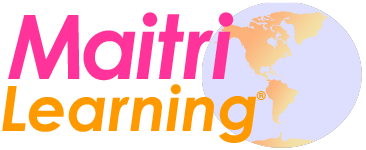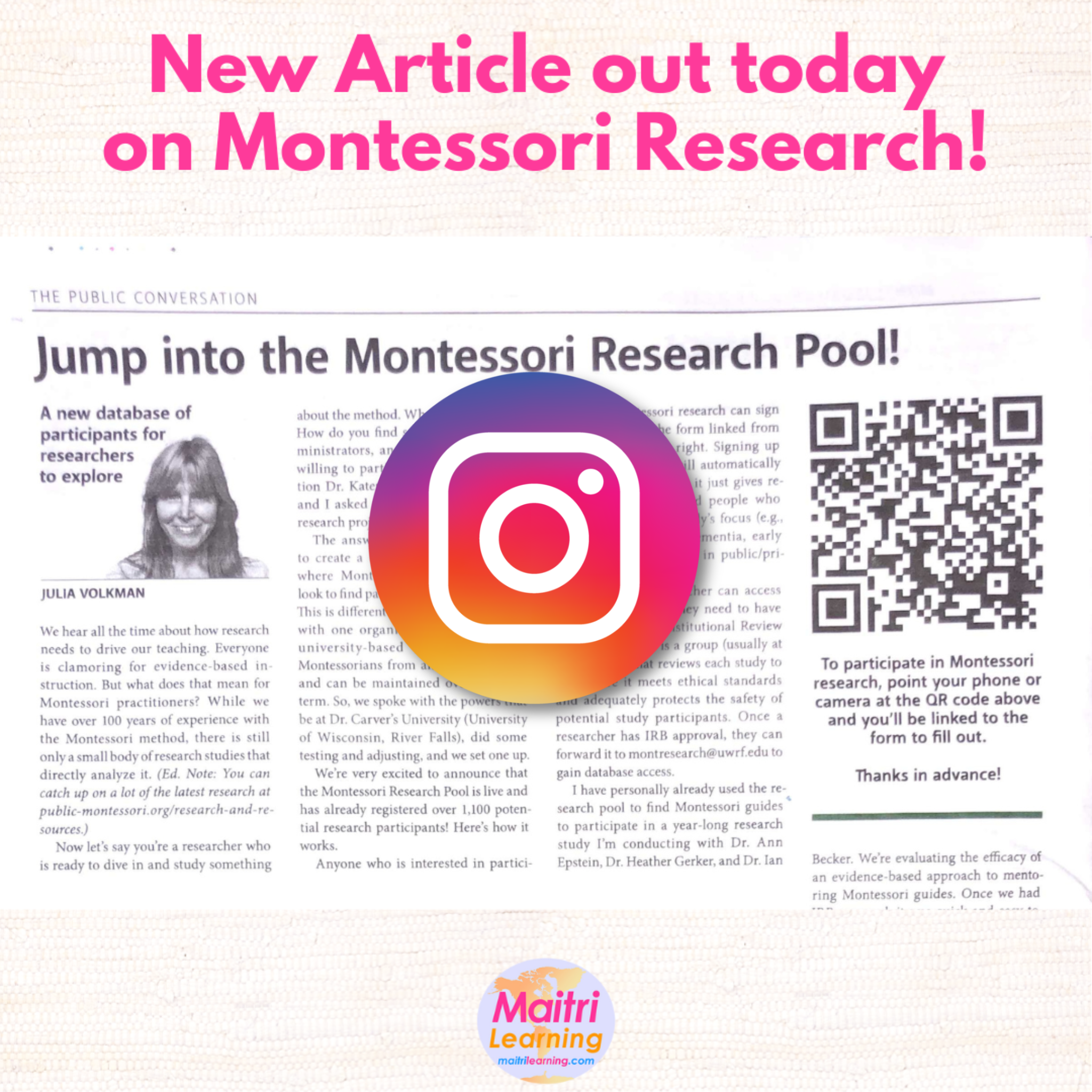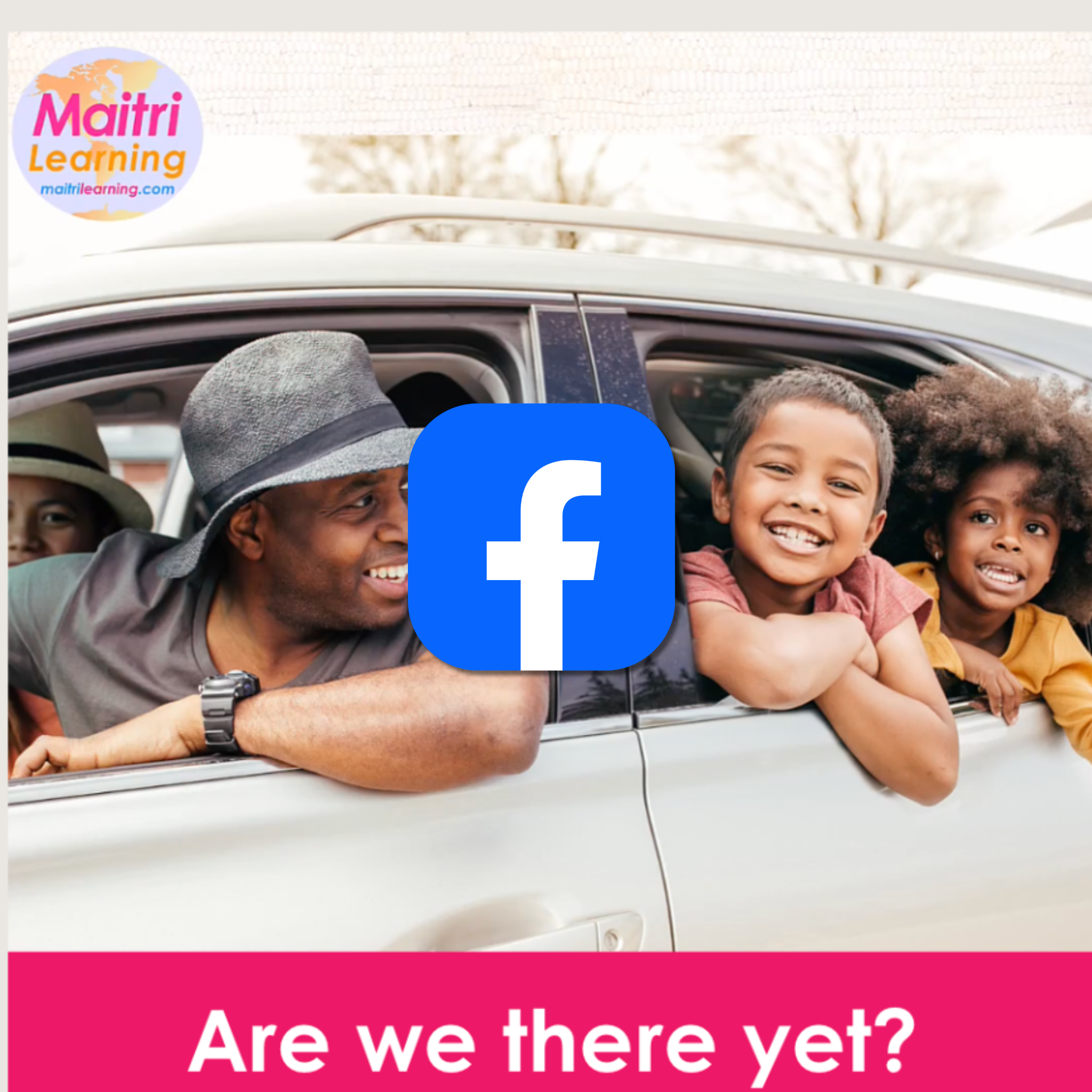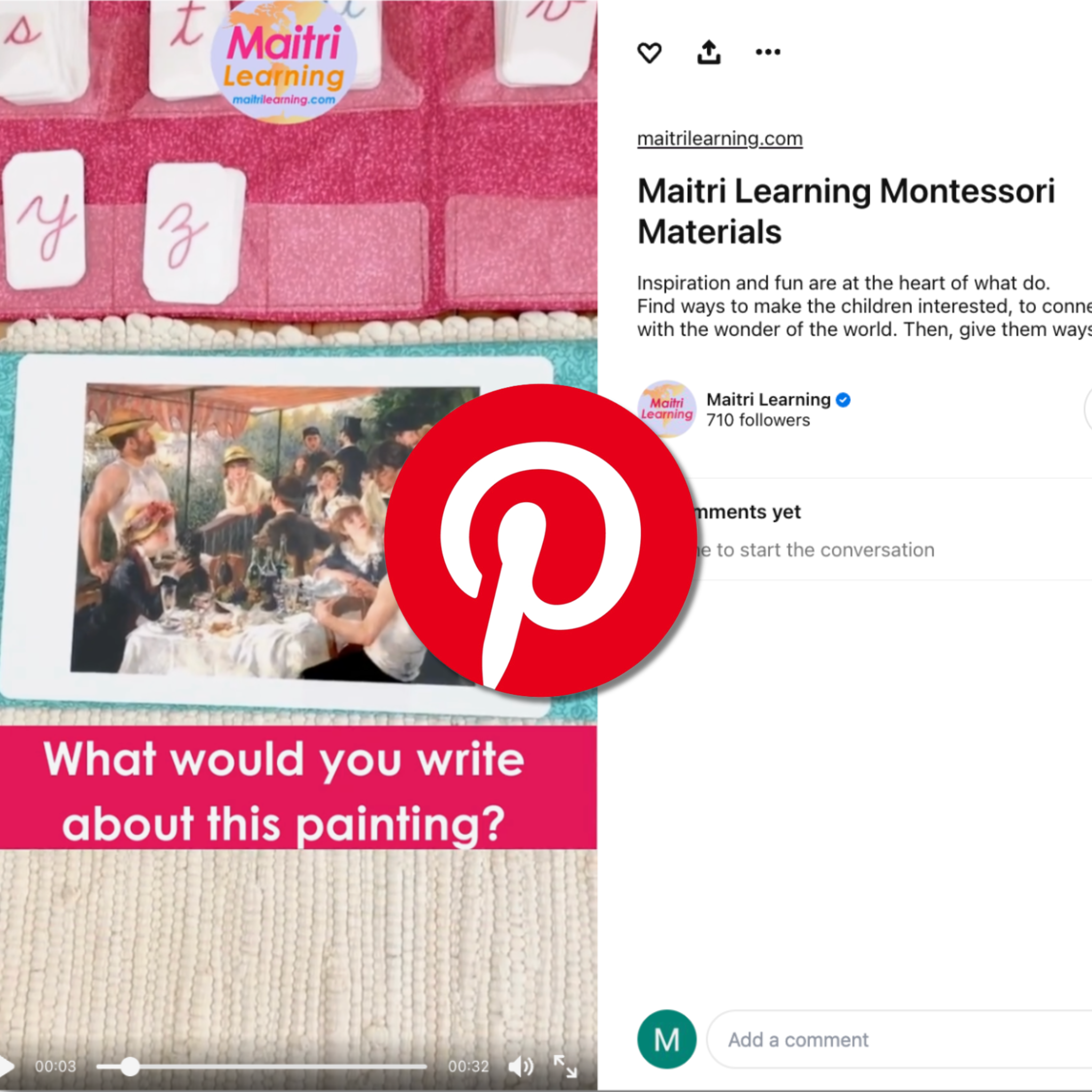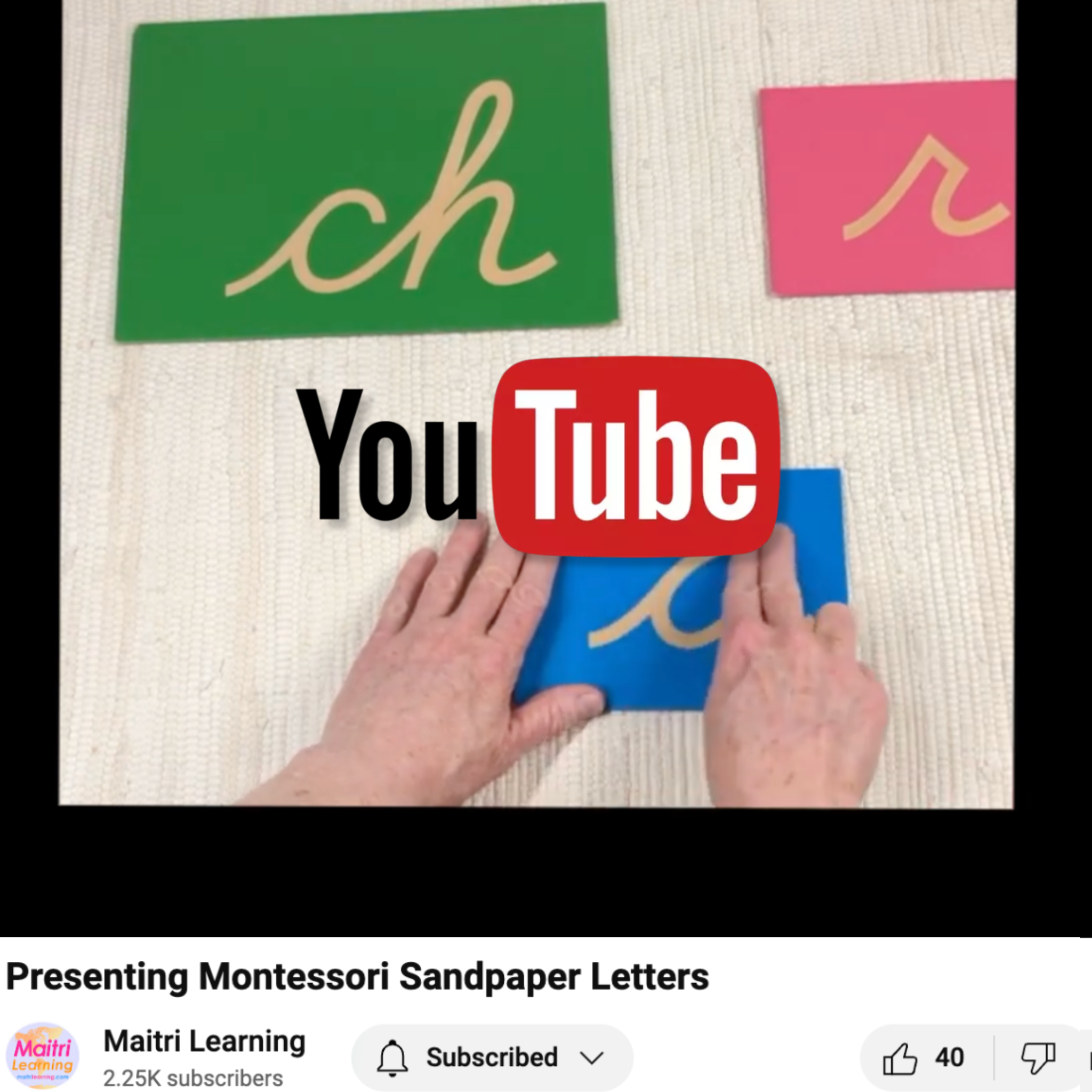Science of Reading & Maitri Learning
At Maitri Learning, we integrate literacy research with our deep understanding of neurodevelopment. We use this broader lens on the Science of Reading to create materials that work with—not against—the brain's natural development. This isn't just about teaching reading; it's about nurturing all students and supporting the educators who guide them. Every material we create and the way we use them resonates with our innate biological drives. Maitri Learning operates at the intersection of SOR and the Neuroscience of Learning.

What is the Science of Reading
The Science of Reading (SOR) refers to a large body of research that shows us how people not only learn the mechanics of reading (phonics) but also how we learn to understand what we read (comprehension). SOR encompasses decades of multi-disciplinary research in the fields of literacy, education, psychology, and neuroscience.
Key Elements of SOR Missing in Other Approaches
Many programs that claim to be based in the Science of Reading oversimplify this transdisciplinary body of evidence into literacy-specific findings. That view is incomplete and often misses key elements by:
- Overemphasizing rote phonics instruction, which can be disengaging.
- Neglecting preschool (when children are naturally curious about language and letters).
- Ignoring the importance of hands-on, play-based learning experiences.
- Overlooking the importance of emotions, relationships, student-interests, and choice in learning.
- Prioritizing a rigid scope and sequence over the natural curiosity and intrinsic motivation of a student (for more detail on the challenges of rigid structured literacy approaches see Compton-Lilly, et al., 2020)
- De-prioritizing the development of student agency and self-efficacy.
The Maitri Learning® Difference
At Maitri Learning, our educational framework is based on a deep understanding of both literacy research and the neuroscience of learning. This allows us to offer a comprehensive approach to reading development that:
- Is grounded in literacy research
- Integrates key elements from the neuroscience of learning
- Implements unique practices that honor human development
No more busy work! Use your time to meaningfully engage with your students. We use self-monitoring to help students naturally spiral their learning, revisiting work as they need to on the road to mastery. We do not recommend sound walls or worksheets or scripted lessons.
Integrating the Neuroscience of Learning

While literacy research tells us what to teach, the Neuroscience of Learning guides us in how to teach it. (You can learn more about Neuroscience of Learning research in our blog post on the New Neuroscience of Learning but I'll provide a high-level summary here.)
Learning isn't just in the brain and it's not just about cognition. Learning is deeply connected to emotions, physical experiences, and relationships. Neuroscience of Learning research has revealed five fundamental developmental factors that shape human learning (Immordino-Yang et al., 2023):
- Learning and development are dynamic, they don't follow a set path.
- We learn through experience.
- We are driven to find meaning and purpose in what we do.
- Learning is inseparable from and embedded in culture and relationships.
- Learning physically changes our bodies and genes (embodiment).
What does that mean for education and development? Foremost, our brains develop and adapt throughout our lives and that development is dramatically influenced by relationships and emotions. Positive relationships, emotional connections, and a sense of agency create physiological changes that enhance learning, while stress and disconnection inhibit it. If our programs don't consider these aspects of human development, how can we expect to achieve our desired results?
With this in mind, we must be sure that our lesson plans:
- Respect the human need for agency, to make logical choices and realize the results of those choices
- Allow students to think deeply about what they are learning and make connections to the broader world
- Encourage peer teaching, feedback, input, and relationships
- Avoid stress (which differs from the urgency to get things done on time)
These ideas resonate with educators and have radical implications for how we teach. They tell us that teaching should move away from being teacher-centric. They show us that instruction should adapt so it can match assigned work with student interests. They clarify that our teaching materials themselves should provide a control of error so that students can find and correct their own mistakes. We can prepare our learning environments so they are rich with modes of activities that connect with student interests, are inherently self-correcting, and encourage peer study and engagement.
Unique Maitri Learning Practices that Honor Human Development
| Neurodevelopmental Element | Maitri Learning | Other Systems |
| Human-centered: focus on whole student and educator | ✓ |
X |
| Honors student-interests | ✓ | some |
| Emphasizes independence and self-efficacy | ✓ | X |
| Seamlessly incorporates self-assessment and self-correcting materials | ✓ | X |
| Supports memorization through interests (not rote memorization) | ✓ | X |
|
Integrates phonics and comprehension |
✓ | some |
| Support for diverse learners | ✓ | some |
Human-Centered Design: We focus on the whole student and educator, creating materials that are not only effective for literacy development but also supporting emotional growth, positive relationships, and well-being. Our neuroscience-informed activities bring the joy back into teaching for students and educators.
Honoring Student-Interests: We teach vocabulary, background knowledge, letter sounds and more by connecting those lessons with what interests each student, thus promoting their intrinsic motivation to learn.
Emphasis on Independence and Self-Efficacy: Our materials, like self-correcting 3-part cards, foster independence, allowing students to learn at their own pace and develop strong self-monitoring skills. By providing opportunities for children to make meaningful choices, realize the results of those choices, and make connections to the broader world, our materials promote the development of self-efficacy and a developing sense of agency (knowing that their decisions and ideas matter).
Seamlessly incorporates self-assessment and self-correcting materials: Nurturing development means teaching students how to take charge of their learning. We build self-assessments into our learning program so that students understand what they've already learned and what comes next. This helps them advocate for their learning and keeps them on a path towards mastery. We also design self-correcting materials so that students can identify what they know, what they don't, and fix their own errors.
Beyond Rote Memorization: Unlike programs that overemphasize rote learning, our activities provide a dynamic and engaging learning environment with a light-attitude towards error. We understand that errors are a normal part of learning; they are not cause for alarm but guide where we need to focus.
Integrated Phonics and Comprehension: We understand that learning to read and reading to learn should be done simultaneously from the earliest years (Ross, 2024). We do not separate the teaching of phonics and comprehension.
Support for Diverse Learners: Our approach is designed to be effective for all students, including those with learning differences like dyslexia. The systematic approach provides necessary structure, while student-guided learning creates a flexible environment where everyone can thrive.
Grounded in Literacy Research

Our materials are designed with the essential balance between word recognition (phonics) and language comprehension in mind. They integrate key findings from literacy models like the Simple View of Reading (Gough & Tunmer, 1985; Hoover & Tunmer, 2022), Scarborough's Reading Rope (Scarborough, Neuman, & Dickinson, 2001), and the Dwyer system (Dwyer, 2004). Here's how we incorporate the fundamental learning elements outlined in the Science of Reading as compared with other systems.

Vocabulary & Spoken Language
Speaking and listening is the core of all language learning. We can support this through natural and explicit activities that help build relationships, self-agency, and word knowledge all at the same time.
| Vocabulary & Oral Language | Maitri Learning | Other Systems |
| Play-based vocabulary & oral language development with word games (like categories and charades) | ✓ |
some |
| Explicit prompts and motives for conversation | ✓ | some |
| Explicit vocabulary lessons via 3-period lesson games | ✓ | X |
| Classification, matching, & sorting activities (to develop gist) | ✓ | some |
| Develops background knowledge through fine art, geography, and science | ✓ | X |
| Explicitly builds vocabulary based on student interests | ✓ | X |
| Emphasis on student conversation and storytelling | ✓ | some |
|
Flexibility for individualized learning paths |
✓ | some |
Key Maitri Learning materials that support Vocabulary & Oral Language:
Phonological Awareness 
We can't learn to read if we can't recognize the larger (like syallables) and smaller (phonemic awareness) sound units of our language. Our system targets phonological awareness in multiple ways to support all learners.
| Phonological Awareness | Maitri Learning | Other Systems |
| Music & rhythm focused games for syllable awareness | ✓ | some |
| Play-based sound games for beginning sounds | ✓ |
✓ |
| Play-based sound games for middle sounds and ending sounds | ✓ | X |
| Activities for sound segmentation | ✓ | some |
| Progressive development of sound awareness | ✓ | some |
|
Flexibility for individualized learning paths |
✓ | X |
Key Maitri Learning materials that support Phonological Awareness:
 |
 |
 |
Phonics

Phonics is more than just reading words that follow the phonetic code. It is much larger and can be divided into:
- Letter-sound knowledge
- Writing (Encoding)
- Reading (Decoding)
Our system explicitly targets all three of these domains with varied and engaging activities. We also recognize that encoding precedes decoding; it is easier to build words using a code than it is to decipher them.
| Phonics: Letter-Sound Knowledge | Maitri Learning | Other Systems |
| Explicit instruction in letter-sound relationships | ✓ | ✓ |
| Explicit instruction in digraph-sound-relationships (digraphs from the start) | ✓ | X |
| Materials targeted for the needs of different ages/stages | ✓ | some |
| Phonics: Writing (Encoding) | ||
| Writing/building within a code precedes reading (cracking a code) | ✓ | X |
| Sequential activities that progress based on student abilities/pace | ✓ | some |
| Phonetic spellings encouraged as an essential developmental step |
✓ |
X |
|
Systematic spelling instruction based on classifications of spelling variations |
✓ |
some |
| Phonics: Reading (Decoding) | ||
| Self-correcting materials so students can find and fix their mistakes | ✓ | X |
|
Focus on word-level reading to build confidence and an internal lexicon |
✓ |
X |
|
Integrated comprehension activities (rather than isolated practice) |
✓ |
some |
| Flexibility for individualized learning paths | ✓ | X |
Key Maitri Learning materials that support Phonics:
 |
 |
 |
Fluency & Reading Comprehension 
Our activities integrate fluency and comprehension throughout reading activities. Play-based repetition and student interests drive this process. Teaching intentionally connects learning with existing knowledge from day one. We recognize that young children have a unique ability to acquire even advanced vocabulary when they develop an interest in it. As such, a core tenet of our system is developing background knowledge so that comprehension naturally evolves.
| Fluency | Maitri Learning | Other Systems |
| Activities that inspire repetition | ✓ | some |
| Using the same materials (like alphabets) in progressively more challenging ways | ✓ | X |
| Materials that transition from decoding to automaticity | ✓ | some |
| Integrating reading with comprehension activities | ✓ | some |
| Combining visual, tactile, and auditory components for a multi-sensory approach | ✓ | some |
| Reading Comprehension | Maitri Learning | Other Systems |
| Self-correcting materials so students can find and fix their mistakes | ✓ | X |
| Connecting activities to student interests and pre-existing knowledge | ✓ | some |
| Integrating vocabulary and meaning | ✓ | some |
| Play-based activities to teach grammar/word function | ✓ | some |
| Self-correcting materials for studying antonyms, homonyms, contractions, homonyms, and more | ✓ | X |
| Flexibility for individualized learning paths | ✓ | X |
Key Maitri Learning materials that support Reading Fluency:
 |
 |

|
Key Maitri Learning materials that support Spelling Fluency:
 |
 |
 |
Key Maitri Learning materials that support Reading Comprehension:
 |
 |
 |
At Maitri Learning, we integrate all five of these Science of Reading components with neuroscience principles. Every aspect of our learning materials emphasize student agency, emotional engagement, and hands-on learning rather than rote instruction. (If you'd like to go deeper into how our activities align with the Science of Reading, we recommend the book Powerful Literacy in the Montessori Classroom written by Susan Zoll, Natasha Feinberg, and Laura Saylor.)
Measuring Progress
Understanding where each learner is along the literacy continuum is essential for good teaching. Our lessons include explicit pre-requisite activities and purposes aligned with the science of reading. We also include accommodations and remedial activities for key lessons to help teachers support all students. Teachers are guided on what to observe for to recognize that students are progressing.
Maitri Learning: Teaching from the intersection of SOR and the Neuroscience of Learning
The Maitri Learning approach demonstrates that scientific rigor and joyful learning are not mutually exclusive. By integrating literacy research with the neuroscience of learning, we have created a system that honors both the mechanics and the magic of reading, with a focus on both results and development. Our materials and methods provide educators with the tools they need to guide every student toward reading success without losing the joy and wonder that makes reading truly transformative. Our system empowers students for long-term reading success.
Our Maitri approach works because it is grounded in a transdisciplinary understanding of human development. We are driven to inspire educators as they guide students not only to become skilled readers, but also as they grow into confident, self-directed, intrinsically-motivated learners.
With Maitri Learning, you're investing in a system that is both educationally sound and deeply rooted in the scientific understanding of how humans learn, grow, and thrive.
References
Compton‐Lilly, C. F., Mitra, A., Guay, M., & Spence, L. K. (2020). A confluence of complexity: Intersections among reading theory, neuroscience, and observations of young readers. Reading Research Quarterly, 55, S185-S195.
Dwyer, M.I. (2004). A path for the exploration of any language leading to writing and reading. NAMTA Journal, 29(3).
Fischer. K. & Yan, Z. (2002). The development of dynamic skill theory. In: Lewkowicz, D.J. & Lickliter, R., eds. Conceptions of Development: Lessons from the Laboratory. New York, NY: Psychology Press.
Gough, P. B., & Tunmer, W. E. (1986). Decoding, reading, and reading disability. Remedial and Special Education, 7(1), 6-10.
Harris, J., Golinkoff, R. M., & Hirsh-Pasek, K. (2011). Lessons from the crib for the classroom: How children really learn vocabulary. Handbook of Early Literacy Research, 3, 49-65.
Hoover, W. A., & Tunmer, W. E. (2022). The primacy of science in communicating advances in the science of reading. Reading Research Quarterly, 57(2), 399-408.
Immordino-Yang, M. H., Nasir, N. I. S., Cantor, P., & Yoshikawa, H. (2023). Weaving a colorful cloth: Centering education on humans’ emergent developmental potentials. Review of Research in Education, 47(1), 1-45.
National Reading Panel (US), National Institute of Child Health, & Human Development (US). (2000). Report of the National Reading Panel: Teaching children to read: An evidence-based assessment of the scientific research literature on reading and its implications for reading instruction: Reports of the subgroups. National Institute of Child Health and Human Development, National Institutes of Health.
Ouellette, G., & Sénéchal, M. (2008). Pathways to literacy: A study of invented spelling and its role in learning to read. Child Development, 79(4), 899-913.
Ross, M. (2024). What exactly is the science of reading? Harvard Graduate School of Education. https://www.gse.harvard.edu/ideas/usable-knowledge/24/06/what-exactly-science-reading
Scarborough, H. S., Neuman, S. B., & Dickinson, D. K. (2001). Connecting early language and literacy to later reading (dis) abilities: Evidence, theory, and practice. Handbook of Early Literacy Research, 1, 97-110.
Uccelli, P., Demir‐Lira, Ö. E., Rowe, M. L., Levine, S., & Goldin‐Meadow, S. (2019). Children's early decontextualized talk predicts academic language proficiency in midadolescence. Child Development, 90(5), 1650-1663.
Zoll, S., Feinberg, N., & Saylor, L. (2023). Powerful literacy in the Montessori classroom: Aligning reading research and practice. Teachers College Press.
